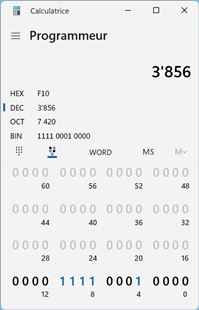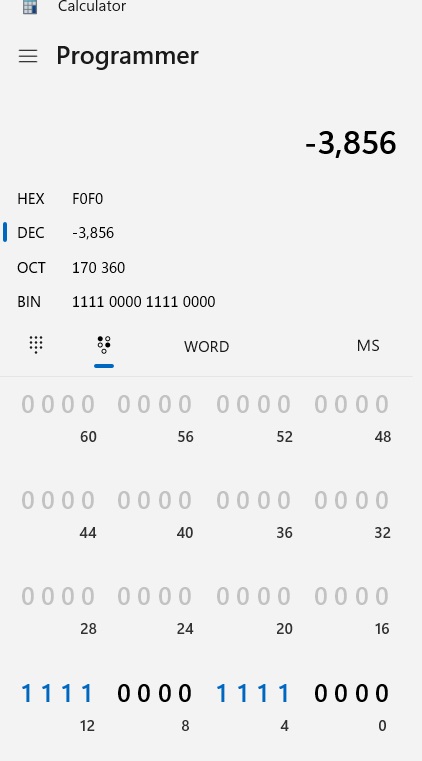Keep reading. It's a 13-bit differential converter.
From the datasheet section 5.1:
So that's 12 bits of data + sign. See Section 6.1.and the device uses the collected charge to produce a serial 13-bit binary two’s complement output code.
Keep reading. It's a 13-bit differential converter.
From the datasheet section 5.1:
So that's 12 bits of data + sign. See Section 6.1.and the device uses the collected charge to produce a serial 13-bit binary two’s complement output code.
Okay then, didn't see that one 😵
So I'll get a 12 bits "value" and the last bit will indicate either "+" or "-", right?
Roger
if by last bit you mean the msb then yesthe last bit will indicate either "+" or "-", right?
not forgetting its a 13-bit binary two’s complement number
Warning I'm not a teacher
...and that means what exactly please?not forgetting its a 13-bit binary two’s complement number
Roger
Your ADC is differential one. So, that means it can convert positive and also negative (in relation to the two inputs + and -) voltages.
If the + input is more positive than the - input of the converter then the output will be a plain 12 bit binary number.
But if the - input is more positive than the + input, then as you can understand the result of the ADC should be negative. This is shown in binary with the most significant bit (MSB) of the value being 1. That is the sign bit.
But the rest of the 12 bits follow a specific rule then. All bits are reversed and also -1.
For example, 1 1111 1111 1111 means negative number and this number is the reverse of 1111 1111 1111 plus one, or just 1. So in total -1.
Or, 1 0000 1111 0000 is also negative and the value is -3856
Hope this clear a bit of the mud!
Ioannis
More here https://www.cs.cornell.edu/~tomf/not.../twoscomp.html
Thanks Ioannis and sorry for the late reply,
So, if I would connect GND to the "-" input and measure i.e. a + signal from 0 to 5 Volts, I should have as 12 bits result, right?
This is confusing to me. I get the positive and negative thing but I can't figure out how you come to this 3856 number?Or, 1 0000 1111 0000 is also negative and the value is -3856

Roger
to expand a 13 bit negative two's complement number to a 16 bit number bits 13,14 an 15 need to be set accordingly
in general the "sign bit" needs to be extended to the new width
so 1 0000 1111 0000 becomes 1111 0000 1111 0000 qed -3856

Warning I'm not a teacher
Bookmarks